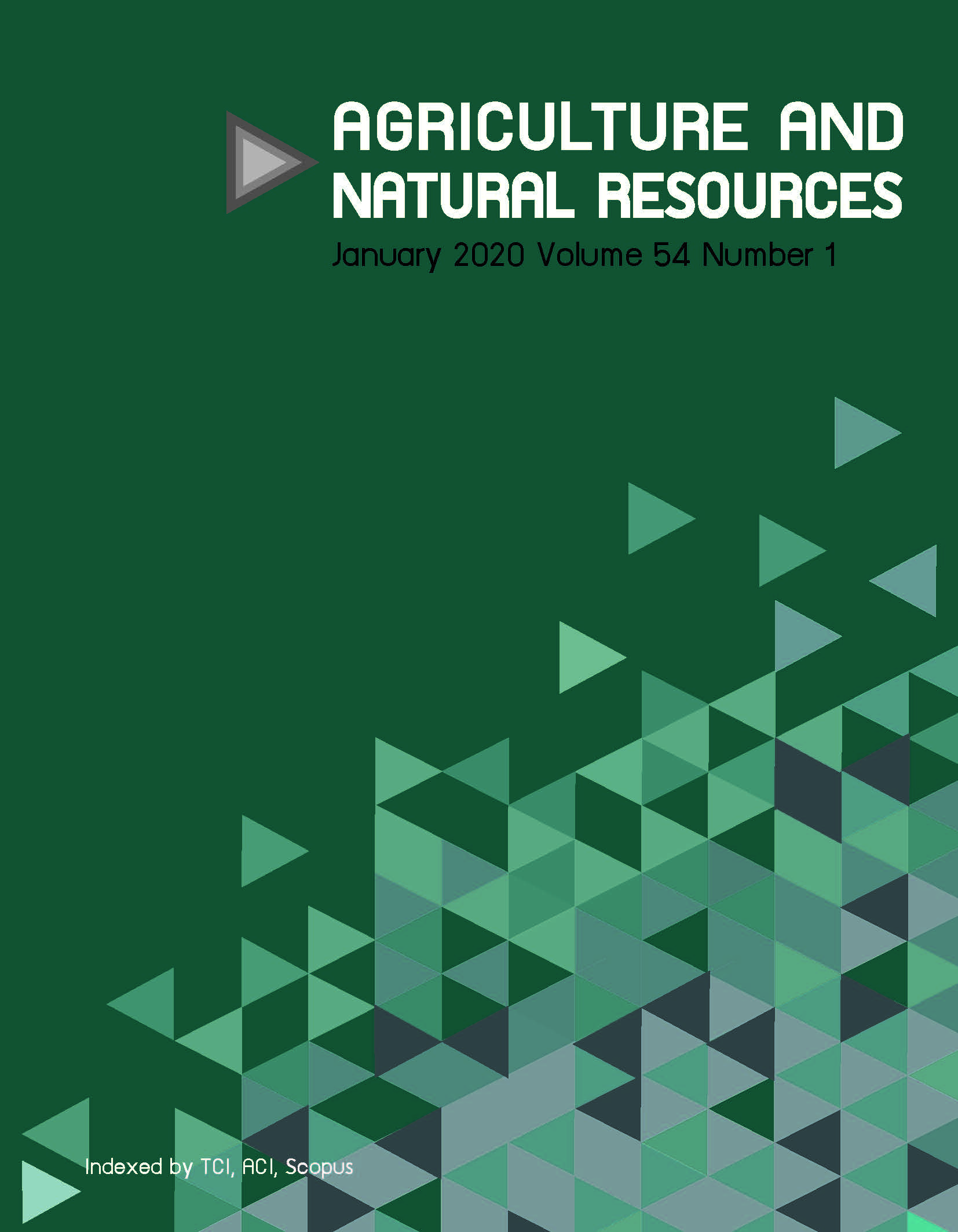Inducing genetic diversity of Anubias nana using gamma rays
คำสำคัญ:
Anubias nana, Chronic irradiation, Gamma irradiation, Gamma rays, Tissue cultureบทคัดย่อ
Plantlets of Anubias nana cultured on Murashige and Skoog medium were irradiated with gamma rays for both acute and chronic treatments of 0 Gy, 10 Gy, 20 Gy, 30 Gy, 40 Gy, 50 Gy and 60 Gy at a dose rate of 3.73 Gy/min (acute) and of 0 Gy, 26.88 Gy, 39.39 Gy, 66.22 Gy, 84.15 Gy, 105.52 Gy and 123.45 Gy at a dose rate of 0.45 Gy/h (chronic). Both irradiation methods were applied at the Nuclear Technology Research Center, Kasetsart University, Bangkok Thailand. At 60 d after irradiation for acute irradiation, the survival percentage of A. nana in the M1V1 generation decreased when the radiation doses increased; it was not possible to calculate the 50% lethal dose at 60 d after irradiation (LD50 (60)) but there was a highly significant (p < 0.01) decrease in the growth percentage. A dose of 34 Gy produced a 50% reduction in the growth rate at 60 d after irradiation. The selected mutants in the M1V4 generation had variegated leaves, dwarfism, light green leaves, abnormal leaves and albinism. With chronic irradiation in the M1V1 generation, there was no differences between the survival and growth percentages at doses of 0–84.15 Gy but there was with the 105.52 Gy and 123.45 Gy treatments. It was not possible to calculate the LD50 (60). Nevertheless, the growth percentage at the maximum dose (123.45 Gy) was 54.38%, which was nearly equal to a 50% growth reduction. In the M1V4 generation, some mutants were selected to resemble acute irradiation. Therefore, the appropriate doses of acute and chronic irradiation to induce mutation of A. nana should be in the ranges 10–35 Gy and 80–130 Gy, respectively.
ดาวน์โหลด
เผยแพร่แล้ว
รูปแบบการอ้างอิง
ฉบับ
ประเภทบทความ
สัญญาอนุญาต
ลิขสิทธิ์ (c) 2020 Kasetsart University

อนุญาตภายใต้เงื่อนไข Creative Commons Attribution-NonCommercial-NoDerivatives 4.0 International License.
online 2452-316X print 2468-1458/Copyright © 2022. This is an open access article under the CC BY-NC-ND license (http://creativecommons.org/licenses/by-nc-nd/4.0/),
production and hosting by Kasetsart University of Research and Development Institute on behalf of Kasetsart University.







